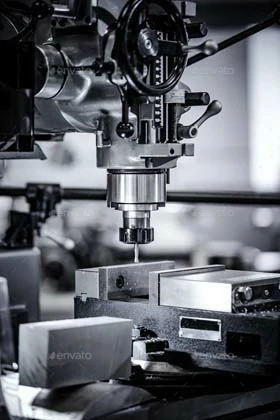Simulation and optimization practice of digital twin technology in 5-axis CNC programming process
2 min read
Simulation and Optimization Practice of Digital Twin Technology in 5-axis CNC Programming Process
Introduction
With the rapid development of manufacturing technology, Computer Numerical Control (CNC) machines have become essential tools in various industries. CNC programming plays a crucial role in translating design specifications into machine instructions. However, errors in programming can lead to costly mistakes and production delays. To mitigate such risks, the application of digital twin technology has gained significant attention.
Benefits of Digital Twin Technology
1. Increased Efficiency: Digital twin technology allows programmers to simulate and optimize the CNC programming process before its implementation. By creating a virtual replica of the physical CNC machine, programmers can identify potential issues and make necessary adjustments, significantly reducing the time and effort required for trial and error.
2. Error Detection and Prevention: Through simulation, digital twin technology enables programmers to identify errors or conflicts in the programming code. By identifying and rectifying these errors in the virtual environment, programmers can avoid costly mistakes in the actual manufacturing process.
3. Optimization of Tool Paths: Digital twin technology offers the capability to optimize tool paths, resulting in improved machining accuracy and reduced production time. By simulating different tool paths and analyzing their impact on the final product, programmers can select the most efficient path that maximizes productivity while maintaining quality standards.
Implementation Challenges
Despite the evident benefits, implementing digital twin technology in the CNC programming process comes with its own set of challenges.
1. Data Complexity: Accurately representing the physical CNC machine and its numerous components in a virtual model can be challenging. Gathering and organizing data related to machine geometry, kinematics, and behavior requires substantial effort and expertise.
2. Algorithm Development: Developing algorithms that accurately simulate the complex physics involved in the CNC machining process is another significant challenge. The algorithm should take into account factors such as tool wear, material behavior, and machine dynamics to provide reliable predictions.
3. Integration with CAD/CAM Systems: Integrating digital twin technology with existing Computer-Aided Design (CAD) and Computer-Aided Manufacturing (CAM) systems can be complicated. Ensuring seamless data exchange and compatibility between different software tools and platforms requires robust integration strategies.
Conclusion
The application of digital twin technology in the CNC programming process has the potential to revolutionize the manufacturing industry. By simulating and optimizing the programming process, programmers can minimize errors, reduce production time, and improve overall efficiency. However, the successful implementation of this technology requires addressing challenges related to data complexity, algorithm development, and system integration. With further advancements and research in this field, digital twin technology will continue to play a pivotal role in enhancing CNC programming practices.
.webp)




